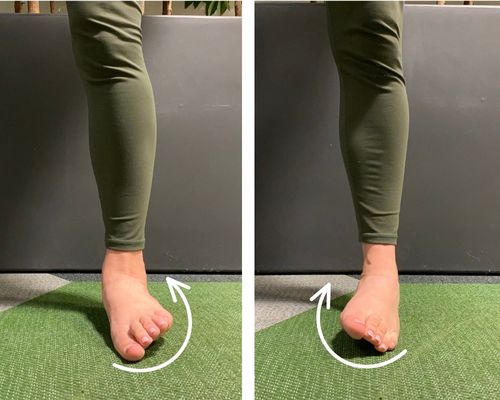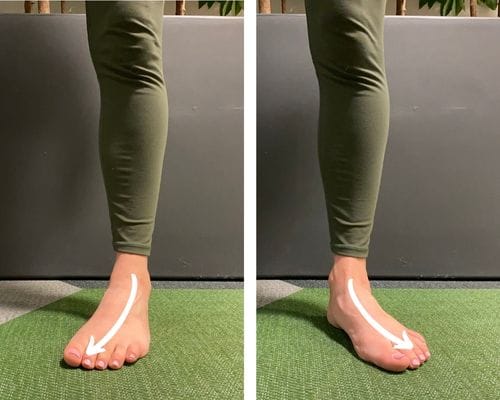
Connecting to Your Feet and Ankles for Injury Prevention
I remember back to first studying programming somewhere around 2004 and wondering why the Gods of Exercise Prescription didn’t mention ankles, feet, wrists and hands. It seemed strange to me. Surely if you needed those bits for squatting, running and pushing then it would make sense to have some understanding of how to keep them functioning as intended.
When I started working as a personal trainer the following year, I continued to studiously pour over the popular fitness books, websites and articles of the time. Ankles were never more than cursorily addressed in the context of sports performance or injury rehabilitation, a realm that personal trainers were told to stay well clear of.
I insisted my clients follow hard-copy program cards with as much diligence as I had used to devise them. The ‘perfectly’ crafted ‘upper-and-lower’ or ‘push-pull-legs’ or ‘5-part-split’ workouts only ever included ankle care if my clients fell into one of two camps: 1) they were an athlete of some kind, or 2) they had a history of ankle injuries. For everyone else, ‘ankle day’ just wasn’t a thing.
Watch your restrictions
Over the years, I began to understand that modern life (with its comfortable shoes, highly sedentary behaviours and convenience) can be a form of restriction. Unless we actively seek out ‘nutrient density’ in all that our bodies and brains consume, we gradually but certainly diminish ourselves.
In the words of exercise biomechanist and author, Katy Bowman: “Watch your habits, for they become your posture. Watch your posture, for it creates your boundaries. Watch your boundaries, for they restrict your growth. Watch your restrictions, for they create immobility. Watch your immobility, for it becomes your illness.”
When it comes to your body, this magical and sophisticated piece of biological technology, there are no small or insignificant parts. If you’ve ever strained your ankle, broken your big toe, or even had an eyelash trap itself under your eyelid, you’ll be well aware of the impact something seemingly minor can have on your total wellbeing.
Left untreated, restriction, weakness, aberrant function or injury at the ankle will commonly lead to issues in other areas of your body. Possessing good range of motion, neuromuscular coordination and strength will serve your ankles well. One of the best places to start is by taking off your shoes, reconnecting to the ground and moving your ankles through multiple planes of motion.
If you’re experiencing pain or have an injury currently, it’s important to consult your treatment professional for advice on what’s best for you before you start doing any fancy footwork.
Your ankle complex is… well, complex
Your ankle is the region that connects your foot to your lower leg. And while that may seem so obvious that it doesn’t require being stated, the key word in that sentence is region. You’ll commonly hear people refer to the ankle as a ‘joint’ which is somewhat of an oversimplification. Instead of being a singular joint, your ankle complex comprises three joints.
- Tibiotalar or talocrural joint
- Talocalcaneal or subtalar joint
- Transverse-tarsal or talocalcaneonavicular joint
These articulations contribute to the movements that your foot is able to move through at the end of your leg.
Talocrural joint
When someone speaks of the ankle ‘joint’, they’re typically referring to the talocrural joint. This hinge joint is formed by the articulation of the your lower leg bones (tibia and fibula) and the talus in your foot. The motion afforded by this joint allows you to plantarflex (move your foot away from your shin) and dorsiflex (move your foot towards your shin).

Plantarflexion (left) and dorsiflexion (right).
Subtalar joint
This joint is an articulation between the talus bone and the calcaneus (or heel bone) at the back of your ankle complex. Whenever you roll your weight onto the outside or inside edge of your foot (known as inversion and eversion respectively), you’re relying on motion at the subtalar joint.
Inversion and eversion are important actions for gait as they contribute to your ability to balance, change direction, and absorb shock when you walk, run or jump. This requires the subtalar joint to be both mobile and stable.

Eversion (left) and inversion (right).
Talocalcaneonavicular joint
Where the subtalar joint listed above refers to the posterior (or back side) articulation of the talus and calcaneus, the talocalcaneonavicular (TCN) joint is the anterior (or front side) articulation of the same two bones. In addition to the talus and calcaneus, the TCN also includes the navicular bones.
The TCN joint is a type of ball and socket joint (like your shoulder or hip) which allows for gliding and rotational motion. The movements made possible by the TCN (in conjunction with other joints, tendons and ligaments) include:
- Inversion and eversion
- Plantarflexion and dorsiflexion
- Lateral rotation and medial rotation (rotating your foot outwardly and inwardly from the ankle).

Medial rotation (left) and lateral rotation (right).
Integrated ankle motion
While I’ve listed joint actions as being separate based on the joints they occur at, to say that plantarflexion or dorsiflexion (for example) only occurs at the talocrural joint is yet another oversimplification. Research indicates that it’s not accurate to separate out the joint actions entirely.
It is understood that all three joints work together to create coordinated movements known as coupled rearfoot motion. This means that various ankle joint actions are performed together in order to create integrated, global movements of the foot and ankle known as pronation or supination.
With your foot on the floor:
Pronation = plantarflexion + eversion + lateral rotation (inside ankle bone moving towards the floor)
Supination = dorsiflexion + inversion + medial rotation (outside ankle bone moving towards the floor)
Mobility and Stability
Possessing the right amount of motion and control in each action required at each joint is an important part of ankle health and injury prevention.
In addition to having a suitable range of motion, ankle stability is a critical component of healthy ankle function. Various factors contribute to the stability of an individual’s ankles, such as the geometry of the surfaces that articulate, the strength and coordination of the muscles that integrate with the ankle, as well as balance and proprioception.
Proprioception is the sense you have around where your body is positioned in space. Try this: stand on one leg and, if you feel safe to do so, close your eyes. Feel those tiny corrections being made in your ankle as you attempt to balance? That’s a result of your sensory systems (including proprioception) taking in information from your environment and turning it into neuromuscular responses that keep you standing.
Training your proprioception is an exceptionally important way to improve ankle stability and prevent injury. With its proven benefits on brain function, proprioception and lower body dynamic balance, this is where quadrupedal movement training such as Animal Flow can help.
Try this short Flow which takes your ankles through a range of joint actions.
Want to know more about how Animal Flow can improve your proprioception, brain function, strength and more? Find some of the latest research in Animal Flow and quadrupedal movement training by visiting animalflow.com/science_of_animalflow/
